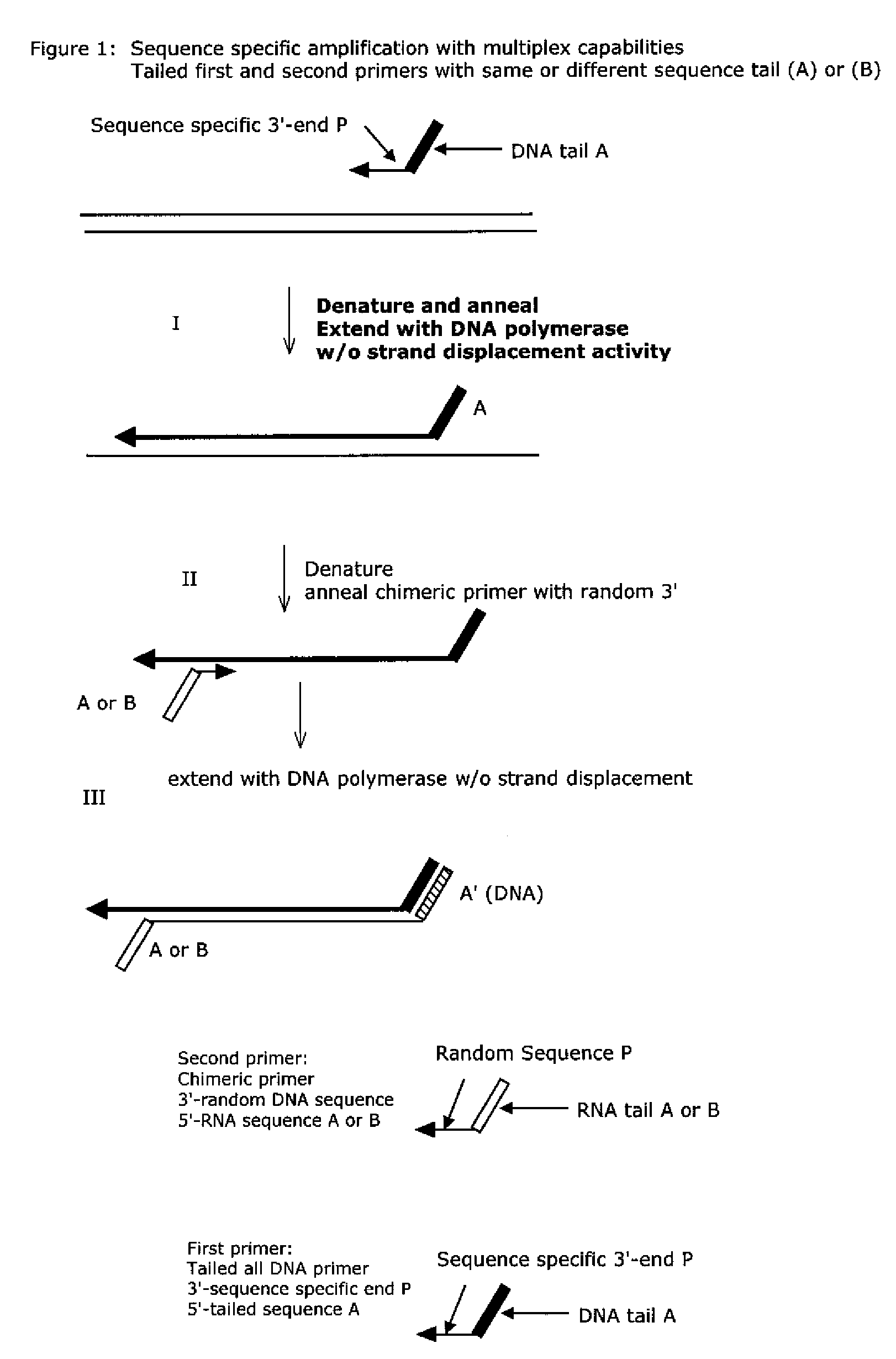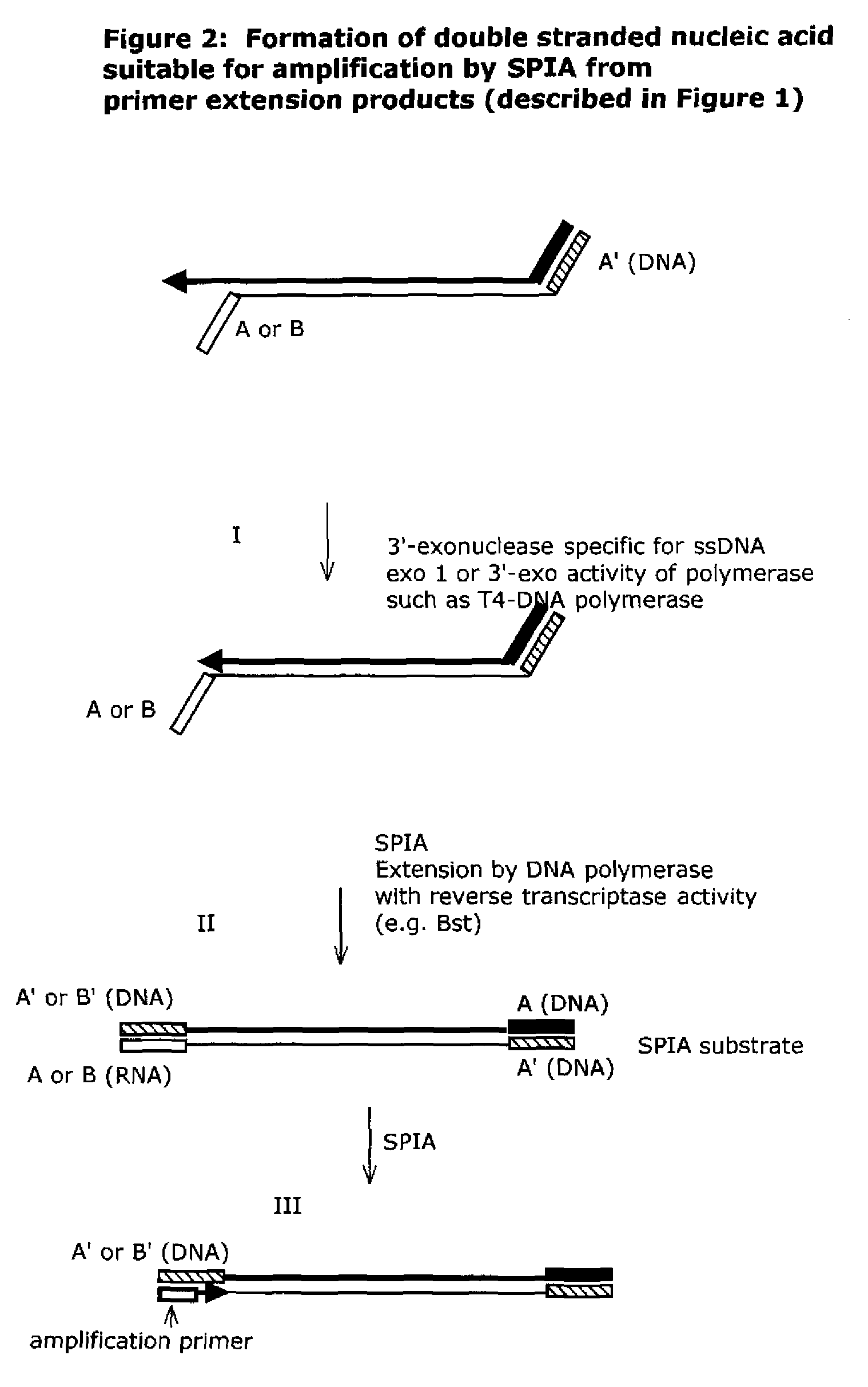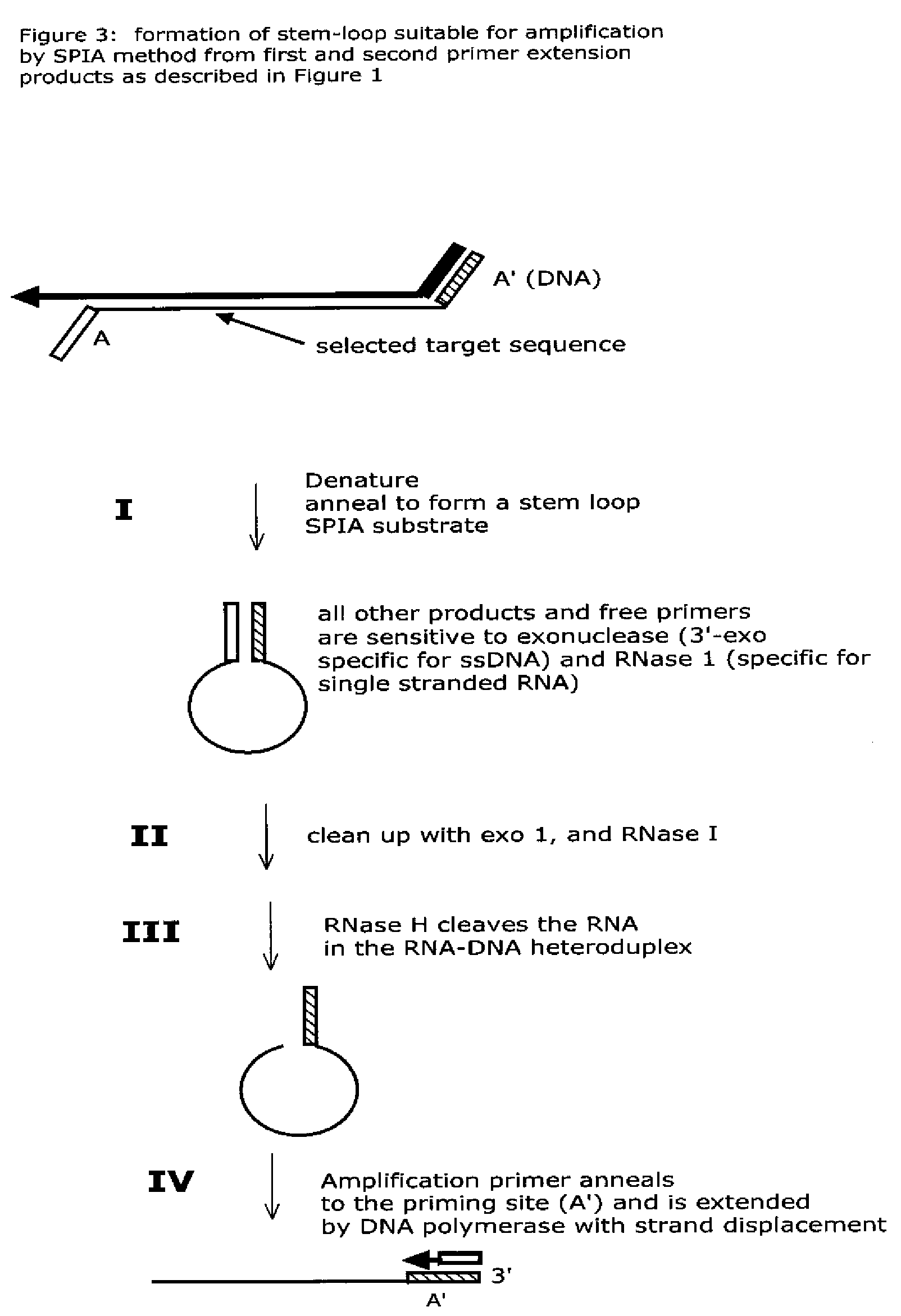Isothermal nucleic acid amplification methods and compositions
a nucleic acid and isothermal technology, applied in the field of isothermal nucleic acid amplification methods and compositions, can solve the problems of forensic and paleoarcheology work being severely limited by the size of nucleic acid sample samples, affecting the ability to carry out large-scale analysis of multiple parameters, and affecting the ability to start materials
- Summary
- Abstract
- Description
- Claims
- Application Information
AI Technical Summary
Problems solved by technology
Method used
Image
Examples
example 1
Target Specific Amplification of Multiple Genomic Sequences on E. coli Genomic DNA
All-DNA Tailed First Primer
[0239]All DNA tailed first primers comprising 3′-end sequence complementary to defined E. coli genomic DNA sequence, and a tailed 5′-end which is not hybridizable to E. coli DNA, and is common to all tailed first primers are used in this example. Four different first all DNA tailed primers are used for this example, as listed in Table 1. The tail sequence of the first primer is the same sequence as that used for the 5′-end tail of the second chimeric primer. The second chimeric DNA-RNA primer comprises a 3′-end random DNA sequence which is hybridizable at random sites on the target DNA, and a 5′-RNA tail which is not hybridizable to the target DNA and is the same sequence as the 5′-tail of the all DNA first primer. Target specific amplification is carried out using the following protocol:
[0240]1. First Primer Extension Reaction Mixture:[0241]1 μl of 1 ng E. coli genomic DNA[0...
example 2
Single and Multiplex Sequence Specific Amplification
[0266]All DNA sequence specific tailed first primer
[0267]Single and multiplexed target specific amplification utilizing the methods of the invention is demonstrated in this example. Four specific gene sequences on genomic yeast DNA are targeted.
[0268]Target specific tailed all DNA first primers used for this example as well as the qPCR primer pairs utilized for quantification of the amplification products are described in Table 3. The input for all amplification reactions is 1 ng genomic yeast DNA. Two experiments employing different enzymes and buffer system in the first and second primer extension reactions, prior to the linear isothermal amplification steps are described below.
[0269]I. The first set of reactions described herein, for single and multiplexed amplification of specific genomic sequences, are carried out as follows:[0270]a. Genomic yeast DNA, 1 ng / μl (1 μl) is mixed with 1 μl of 10× Standard Taq buffer (NEB), 0.2 μl ...
example 3
Sequence Specific Multiplex Amplification of RNA Transcripts
All DNA Tailed First Primer
[0283]A subject presents to a health care provider symptoms indicative of lung cancer, including coughing up blood and shortness of breath. A chest X-ray is performed on the subject and a suspicious mass is detected in the lungs of the subject. A needle biopsy is performed on the subject to obtain tissue from the suspicious mass for further analysis. The biopsied tissue recovered from the subject is processed to extract and purify total RNA using a commercially available Qiagen RNeasy kit according to the manufacturer's instructions.
[0284]500 pg of total RNA representing at least a portion of the transcriptome of the biopsied material is amplified by the methods of the present invention as described herein using: 10 pmol of all-DNA first primers comprising a 5′ segment and a 3′ segment. The 3′ DNA segment of these first primers further comprise an annealing sequence that is complementary to the se...
PUM
| Property | Measurement | Unit |
|---|---|---|
| temperature | aaaaa | aaaaa |
| temperature | aaaaa | aaaaa |
| temperature | aaaaa | aaaaa |
Abstract
Description
Claims
Application Information
 Login to View More
Login to View More - R&D
- Intellectual Property
- Life Sciences
- Materials
- Tech Scout
- Unparalleled Data Quality
- Higher Quality Content
- 60% Fewer Hallucinations
Browse by: Latest US Patents, China's latest patents, Technical Efficacy Thesaurus, Application Domain, Technology Topic, Popular Technical Reports.
© 2025 PatSnap. All rights reserved.Legal|Privacy policy|Modern Slavery Act Transparency Statement|Sitemap|About US| Contact US: help@patsnap.com



